Ski: 2025-2026 Atomic Bent 100, 186 cm
Test Location: Crested Butte Mountain Resort, CO
Days Skied: 10
Available Lengths: 158, 165, 172, 179, 186 cm
Blister’s Measured Tip-to-Tail Length (straight-tape pull): 182.9 cm
Blister’s Measured Weight per Ski: 1886 & 1925 grams
Stated Dimensions: 129.5-100-120 mm
Blister’s Measured Dimensions: 129-99.5-119.5 mm
Stated Sidecut Radius (186 cm): 19.5 meters
Measured Tip & Tail Splay (ski decambered): 56.5 mm / 33.5 mm
Measured Traditional Camber Underfoot: 11.5 mm
Core Materials: poplar + fiberglass laminate
Base: sintered
Factory Recommended Mount Point: -7.5 cm from center; 84 cm from tail
Boots Used: Atomic Hawx Ultra 130, K2 Recon 140 BOA, Lange Shadow 130 MV, Armada AR One 130
Bindings Used: Atomic Strive 13 GW
[Note: Our review was conducted on the 24/25 Bent 100, which returns unchanged for 25/26, except for the graphics.]

Intro
First introduced in the 2018-2019 season, the Atomic Bent Chetler 100 quickly became one of the best-selling skis on the market. From our perspective, this was largely due to its versatility — depending on a given skier’s preferences, it could function as a directional all-mountain ski, an agile freestyle / park ski, or even a touring setup for steep backcountry lines.
For the 2024-2025 season, Atomic updated the Bent 100’s construction for the first time, and we were eager to see just how far they decided to stray from the original design. This “v2” Bent 100 returns constructionally unchanged for 25/26 (aside from new graphics from Chris Benchetler himself), and now we’re ready to weigh in.
What Atomic says about the Bent 100:
“Built for every style from freeride to freestyle, the wildly versatile Atomic Bent 100 is a do-everything ski. Rooted in freeride with a side of all-mountain and a dash of art by Chris Benchetler, the celebrated Bent 100 has been reimagined from tip to tail. Incorporating performance feedback from Atomic athletes, the new Bent 100 features a Light Woodcore and new profile with 5% more rocker for more tail pop and easier transitioning to switch. Next generation, freeride specific HRZN 3D delivers improved float in deeper snow and better handling in variable conditions. Dura Cap Sidewalls offer controlled power transmission and commanding edge grip on harder snow and the thicker Resist Edge adds sturdiness and greater durability for sliding park rails. For Bobby Brown it’s a no brainer, the Bent 100 is his everything ski. Playful and sturdy, this is the ski that does it all.”
— Atomic
Construction
The v2 Bent 100’s construction is quite similar to the original’s, with a poplar wood core, semi-cap sidewall, fiberglass laminate, and Atomic’s “HRZN” tip and tail inserts.
Those inserts have been revised for v2, and they now have a beveled / convex shape all the way around the ends of the tips and tails (v1’s were only bevelled on the sides). The goal of these new “HRZN 3D Bent” inserts remains the same — improve flotation and maneuverability in soft snow.
The v2 Bent 100 also got slightly thicker edges to help it better handle the impacts that come with park skiing. On our pair, the edges measure 1.7 mm tall x 2 mm wide.
Shape & Rocker Profile
The shape of the Bent 100 hasn’t really changed. Our 186 cm v2 Bent 100’s measured dimensions are all within a millimeter of our 188 cm v1 Bent Chetler 100. This ski still features some early tapering at the tips and tails, but the effective edge is actually pretty long.
The rocker profile has also stayed pretty similar to the original. This ski is mostly cambered, and there’s a substantial 11 mm of camber underfoot, but it features a fairly deep tip rocker line that’s paired with a much shallower (but twinned) tail rocker line. Atomic claims that the v2 Bent 100 features 5% more tail rocker, but it’s a pretty subtle difference — the v2 Bent 100 still features shallower rocker lines than many other freestyle-friendly skis in its class.
Flex Pattern
Here’s how we’d characterize the flex pattern of the Bent 100:
Tips: 5.5-6
Shovels: 6-7.5
In Front of Toe Piece: 8-10
Underfoot: 10
Behind the Heel Piece: 10-9
Tails: 8.5-7.5
The flex pattern of this new version of the Bent 100 is very similar to the previous version. The cambered portion of the ski — which, again, is most of the ski — is quite strong, but the ends of its tips are pretty soft.
Sidecut Radius
The 186 cm Bent 100’s stated sidecut radius is 19.5 meters. That’s a touch shorter than the 188 cm v1 Bent Chetler 100 (21 meters), but it’s still right around the middle of the spectrum vs. comparable all-mountain skis.
Lengths
As we’ve alluded to, Atomic did opt to tweak the available lengths for the v2 Bent 100. The longest length is 186 cm (down from 188 cm), and the rest of the lengths for v2 are 179, 172, 165, and 158 cm (which is a pretty broad range).
Mount Point
As with v1, the v2 Bent 100 has a fairly directional recommended mount point of about -7.5 cm from true center, but it also includes several marks fore and aft of that primary line, implying that you could mount this ski at several different spots depending on your preferences (more on that in our Full Review).
Weight (and Comparisons)
Same as the original, the v2 Bent 100 is a pretty light ski. However, as the rest of the all-mountain market has generally gotten lighter since the v1 ski was released, it no longer stands out on paper as much when it comes to weight.
Our 186 cm pair weighs about 1900 grams per ski, which is still pretty light for a non-touring ski, but there are plenty of comparable options that are similar in terms of weight.
For reference, below are some of our measured weights (per ski in grams) for some notable skis. As always, keep in mind the length and width differences to try to keep things more apples-to-apples.
1707 & 1752 4FRNT Switch, 184 cm
1735 & 1741 Elan Ripstick 96, 182 cm
1763 & 1783 Salomon Depart.01, 180 cm
1778 & 1792 Liberty Scope 104, 188 cm
1800 & 1824 Romp Zorro 100, 183 cm
1808 & 1823 Shaggy’s Ahmeek 95, 180 cm
1806 & 1884 Head Oblivion 102, 189 cm
1824 & 1843 Season Kin, 181 cm
1830 & 1860 ZAG Slap 98, 180 cm
1831 & 1844 K2 Mindbender 96C, 178 cm
1851 & 1868 Folsom Completo 100, 186 cm
1869 & 1873 Line Sakana, 181 cm
1880 & 1887 Blizzard Rustler 9, 180 cm
1883 & 1906 Season Aero, 180 cm
1886 & 1925 Atomic Bent 100, 186 cm
1893 & 1925 Icelantic Nomad 100, 188 cm
1894 & 1919 RMU Apostle 96 Ti, 184 cm
1896 & 1942 K2 Reckoner 102, 184 cm (v1)
1901 & 1902 Renoun Endurance 98, 184 cm
1925 & 1934 Black Crows Camox, 186 cm
1929 & 1982 Faction Studio 2, 183 cm
1933 & 1977 Line Optic 88, 184cm
1938 & 2003 Nordica Unleashed 98, 186 cm
1944 & 1952 Fischer Nightstick 97, 184 cm
1947 & 1962 Meier Wrangler, 185 cm
1951 & 2003 Dynastar M-Free 100, 185 cm
1956 & 1976 Blizzard Rustler 10, 186 cm
1976 & 2000 Line Pandora 99, 184 cm
1997 & 2001 ZAG Slap 104, 188 cm
1999 & 2060 Line Blade, 181 cm
2024 & 2112 Dynastar M-Free 99, 185 cm
2040 & 2061 K2 Reckoner 102, 184 cm
2054 & 2063 Salomon QST 98, 189 cm
2057 & 2061 Fischer Ranger 102, 183 cm
2077 & 2096 Line Optic 96, 184 cm
2090 & 2122 Fischer Nightstick 104, 188 cm
For the 2024-2025 season, we’ve partnered with Carv to use their Carv 2 sensors and digital ski coach app to not only learn more about our own skiing technique, but also add more useful info to our ski reviews. Here, you’ll see us reference some of the data that the Carv 2 sensors record and analyze while we’re skiing. Check out our announcement to learn more about how Carv works, why we’re excited to use it as a tool for our reviews, and how to get a discount on your own Carv setup.
FULL REVIEW
The original Bent 100 was one of the most popular skis out there, and for good reason. From more directional skiers to park rats, it offered various performance characteristics that many skiers could enjoy. So, when Atomic updated the Bent 100 for the 24/25 season, we couldn’t help but wonder if / how this new ski would fill the footsteps of its widely successful predecessor. We’ve been skiing the Bent 100 a lot over the past year and are ready to answer that question.
Groomers / On-Piste Performance
Dylan Wood (5’10.5”, 160 lbs / 179 cm, 72.5 kg): For context, I never got much time on the original Bent 100 — we reviewed it back in 2018 before my tenure at Blister began. So, I came into this review knowing how popular the Bent 100 was, but not having much personal experience with it.
For its class, the Bent 100 is a good carver. Its shape, flex pattern, and mount point all add up to a pretty versatile ski on piste. Combine that with above-average edge hold for its category, and most skiers should be happy with what the Bent 100 can do on groomers.
With pretty soft tips and tails, it is relatively easy to bend the Bent 100 and initiate carved turns through the shovels of this ski. And with a mount point of -7.5 cm from true center, the Bent 100 can most definitely be skied with a more directional style and forward stance, but keep your expectations in check for this playful ~100 mm wide ski — don’t expect to be able to carve this thing like, say, the much stiffer and more directional Atomic Maverick 95 Ti.
Our 186 cm Bent 100’s stated sidecut radius is 19.5 meters and, paired with its fairly round flex pattern, that allows the Bent 100 to carve a nice variety of turns on piste. It can be bent into tighter turns than its sidecut radius advertises, but it also feels more than happy to make bigger, faster turns at shallower edge angles.
On a fairly low-angle (~14º) slope where I was trying hard to carve the Bent 100, my Carv data let me know that I was able to achieve turns with an average 17 m radius at edge angles just shy of 50º, with an average G-Force of just 1 and an average speed of 18.5 mph (30 km/h). This isn’t nearly as good as what I am able to do on narrower, stiffer, shorter skis with tighter sidecut radii, but for a ~100 mm twin-tip all-mountain ski, this is certainly at or above my personal norms.
On significantly steeper (~20º) groomed “black” runs, I had to stivot my turns (start each turn with a slide that gradually turns into a carve), rather than riding the sidecut of the Bent 100 the whole time as I’m able to do on more moderate pitches. In this scenario, Carv let me know that I was making roughly 20-m turns at edge angles of about 40º, with a G-Force of 1.2, and an average speed of 24.7 mph (40 km/h).
While it can be pushed pretty hard, the Bent 100 is also fairly easy to carve. It can also be carved with a more centered stance, mostly rolling over the ankles rather than starting each turn from the shovel of the ski. While doing so doesn’t create nearly as much pop between turns or let you bend the ski as much, the Bent 100 is still happy to do so. It’s also not a huge deal to break the Bent 100 free of a carve if you need to change your trajectory — just a little bit of pressure on its shovels and rotation will break its tails free, allowing you to skid out from a carve.
Luke Koppa (5’8”, 155 lbs / 173 cm, 70 kg): Agreed. For a more playful ~100mm-wide all-mountain ski, the Bent 100 carves quite well. As Dylan noted, you can drive its shovels to get a turn going, or just roll it over from your ankles. This ski offers respectable edge hold for its class, and it hits a nice middle ground in terms of turn sizes — it doesn’t feel boring on lower-angle slopes, nor does it feel super skittish if you open up your turns and dial back the edge angle. Atomic’s Maverick skis are more impressive in terms of turn initiation, power, and overall edge hold, but the Bent 100 is plenty fun to carve, given how it performs elsewhere.
Moguls, Trees, & Tight Terrain
Dylan: The Bent 100 combines a light swing weight with a fairly loose ride, creating a ski that’s both agile and precise, working well for a variety of skiing styles in tight terrain.
The Bent 100 is energetic and on the lighter end of the spectrum. Paired with its pretty stiff flex underfoot and good torsional rigidity, and you have a ski that works well with a more dynamic style in tight terrain. The Bent 100 is happy to make turns from edge to edge, getting airborne out of the troughs of moguls, and allowing for easy transitions onto your new edges.
When I take the Bent 100 into moguls, Carv lets me know that I do well with my transition weight release, which essentially measures how much you are able to unweight your skis between turns. I sit at around 93% average on the Bent 100, well within my target zone for the class Carv puts me in (ski:IQ 160+).
Despite its generally precise ride, one of the best things about the Bent 100 is that it is also fairly easy to pivot and slide around. It’s not as loose as some softer and more rockered skis (e.g., K2 Reckoner 102), but the Bent 100 is notably easier to break free from its edges than some more directional skis like the 4FRNT MSP 99. The Bent 100 also becomes notably more surfy in even slightly soft snow conditions, such as 1-2 inches of fresh snow on top of hardpack, or early afternoon slush that still has a firm layer underneath.
The Bent 100 offers respectable stability in tight terrain, but it also isn’t that punishing of mistakes. It has a big sweet spot, and its shovels and tails are supportive enough to allow for recoveries if you get a little backseat or too far over the front of the ski. At the same time, it isn’t wildly stiff, and its tips and tails are easy to release / skid, allowing for a good level of forgiveness that low-intermediate skiers will appreciate while still being encouraged to ski with good technique.
Luke: Yep. When conditions are firm, the Bent 100 feels agile and lively, but more precise than surfy. That encourages the dynamic, light-on-your-feet kind of skiing that Dylan outlined above. However, it feels significantly looser in any sort of soft snow (even if there’s a firm base underneath), which makes the Bent 100 feel notably more maneuverable when the snow is good.
One of the main differences between the v1 Bent Chetler 100 and v2 Bent 100 is that the v2 ski features just a tiny bit more tail rocker. On snow, I would say this difference is pretty subtle, but the newer version does feel a bit easier to release, pivot, and slide (regardless of conditions).
I also agree that it has a big sweet spot — I can pretty quickly recover if I end up too far forward or lean too much on the tails. That said, if forgiveness is your top priority, I’d probably point you toward something a bit softer. Especially on firm snow, the Bent 100’s tail will make itself known if you try to steer through moguls from the backseat for more than a few turns in a row. It’s definitely on the more forgiving end of the spectrum when considering all the ~100mm-wide all-mountain skis on the market, but in the freestyle / playful category, I’d say the Bent 100 is closer to the middle (or the less forgiving side).
Powder & Soft Chop
Dylan: For its width, the Bent 100 handles soft snow just fine. Its soft shovels do a good job of planing above the snow surface, even with a slightly more forward stance, with pressure through the front of your boots. As I mentioned earlier, the Bent 100 also becomes looser with more soft snow underneath it. In powder, it can be slashed and drifted around more easily than on firm snow. But, get it in deep, mostly dry snow of, say, over a foot (30.5 cm), and it doesn’t have the flotation to stay above the surface and remain as surfy as wider options, like the Bent 110.
When the snow becomes chopped up, the Bent 100 provides decent stability and can be skied fairly hard, but it does have its limitations. It is a pretty light ski after all, and while its suspension is good for its weight, it simply lacks mass and can get knocked around a lot when trying to ski hard through soft chop. Rather, I find it best to take advantage of the Bent’s agile feel and energetic flex pattern, getting airborne between turns and essentially smoothing out the terrain by hopping over and between piles of soft snow.
Luke: I took a few refresher laps before sitting down to add my thoughts to this review, and some of them included some surprisingly deep snow (roughly a foot). The Bent 100 handled this a lot better than expected. Granted, this was in steep terrain where momentum was easy to maintain, but I think the Bent 100 is pretty impressive for its class in terms of flotation and maneuverability in deep snow.
However, if I’m able to have a quiver of skis, I’d definitely prefer to have something wider to grab on pow days. This is mostly cause of what follows deep pow — deep chop. In cut-up snow, the Bent 100 gets knocked around quite a bit. It’s still impressively capable for its weight in low-density chop, but the deeper and denser the snow, the more I want to be on a much heavier (and slightly wider) ski. Still, if you take the approach that Dylan outlined above, it’s plenty of fun to hop and slash around on this ski in soft chop.
Firm Chop & Crud
Dylan: Again, the Bent 100 is not an ideal ski for charging through variable conditions. It feels smoother than its weight might suggest, but there are lots of more damp options out there that make firm chop feel a bit less harsh.
Still, for its class, the Bent 100 offers perfectly acceptable performance in crud. It provides good edge hold when you need it, but it also releases from its edges predictably and allows you to skid and smear your turns when you need to. If I often encountered these conditions and wanted to ski hard through them, I’d look to a much heavier ski, but for making your way through crud in search of better snow, the Bent 100 does just fine.
Luke: Yeah, that last line pretty much sums up my take. The Bent 100 is a blast in soft and/or consistent snow, but when it’s firm and rough, it encourages a pretty conservative approach.
Mount Point
Dylan: As with the v1 Bent 100, changing the mount point of the v2 Bent 100 makes for a significant difference in its performance and can help this already versatile ski suit different styles.
On its recommended line (-7.5 cm from true center), the Bent 100 can be skied with a more directional, forward stance, driving the ski through its shovels. It definitely doesn’t offer the same support through the front as most metal-laminate directional skis (e.g., Nordica Enforcer 99), but the average skier should find the front of the Bent 100 plenty supportive. Still, at -7.5, the Bent 100 is also pretty accepting of a more centered stance, where its mostly forgiving tails aren’t super quick to punish you if you happen to end up skiing in the backseat.
Mounting 2-3 cm forward of the recommended line also makes the Bent 100 even more playful and freestyle-friendly. Mounted around -5 cm from true center, it feels even more balanced in the air and even more comfortable skiing switch. You still get good support from the front of the Bent 100, but I do find myself skiing soft snow more from my heels when I have the Bent 100’s bindings moved farther forward. Mounted forward of the line, the Bent 100 becomes an even better park ski, too — more on this next.
Luke: If you’re coming from directional skis with fairly set-back mount points, the Bent 100’s recommended mount point should work great. I tend to get along with most skis designed around similar mount points (-6 to -8 cm), and that was the case with the Bent 100. There, it doesn’t feel perfectly balanced, but it does play well with both a somewhat centered and quite forward stance.
Playfulness / Freestyle Performance
Dylan: The Bent 100 is playful in many regards. It provides a lot of pop and energy and feels light, agile, and balanced in the air. It is easy to get some extra boost on both smaller and bigger features, and the Bent 100 feels comfortable throwing just about any trick you can think of. It’s also a fairly surfy ski, though there are definitely looser options out there — skis like the K2 Reckoner 102 make it easier to both slash around and shuffle out of under- or over-rotated tricks.
When mounted around -5 cm from true center, the Bent 100 feels even more freestyle-friendly, and almost becomes a bit of a park ski. It has a supportive flex pattern that helps with landing bigger features, but it is also fairly easy to bend at the extremities, allowing for butters and presses. I personally prefer a slightly more supportive flex for buttering as I find it helps rebound me out of the butter, but softer skis like the Season Kin are certainly easier to bend than the Bent 100.
Luke: Dylan is way better than I am in this department, but the main thing I’d point out is that, if you’ve assumed the Bent 100 is a super soft ski, it isn’t. Its tips and (less so) tails are easy to bend, and this v2 Bent 100’s tail feels a tad softer than the original’s, but most of the ski is pretty strong. It’s still quite playful overall, but it’s neither the loosest nor the easiest to bend in its class.
Who’s It For?
Dylan: This is what makes the Bent 100 so special — there’s such a wide variety of skiers who could enjoy it. Directional skiers who want something agile with a good mix of precision and maneuverability have good reason to consider the Bent 100. Additionally, more playful skiers who like to ski all over the mountain, throw some tricks, and lap through the park can find a lot of versatility in the Bent 100. And, with its low weight, versatility, and good suspension-to-weight ratio, the Bent 100 remains an excellent 50/50 option for skiers looking to use a ski for both touring and inbounds skiing. It could also make for a good dedicated touring ski for folks who care more about stability than having the lightest setup, and it’s more playful than most dedicated touring skis.
Luke: Dylan nailed it. A huge variety of skiers who want a pretty light, agile, and precise ski that’s still quite playful and versatile have reason to consider the Bent 100.
Bottom Line
With the revised Bent 100, Atomic opted to make a few subtle updates, rather than a major overhaul, and we don’t blame them.
The original ski was already incredibly versatile — in terms of conditions / terrain, and the types of skiers who could enjoy it — and the latest iteration maintains that signature adaptability. The Bent 100 isn’t a ski that stands out for one particular trait or ability, but it does stand out for the range of scenarios and sorts of skiers with which it feels intuitive, practical, and fun.
Our Deep Dives, Winter Buyer’s Guide, & Flash Reviews
BLISTER+ members and those who purchase our Digital Access Pass can check out the Deep Dive comparisons linked below, where we compare a given ski, bike, etc. to a whole bunch of other comparable products in its class. Don’t have access? Get our Digital Access Pass to read all of our Deep Dive comparisons, as well as our Flash Reviews, where we provide our initial impressions as soon as we start testing gear.
Or, even better, become a BLISTER+ member to get that + the best worldwide Outdoor Injury Insurance, exclusive deals and discounts on skis, personalized gear recommendations from us, access to our annual Winter Buyer’s Guide, and much more.
On that note, you can also get our thoughts on this ski and 300+ others in our 2024-2025 Blister Winter Buyer’s Guide. BLISTER+ members already have access, or you can purchase the guide on its own to get the the print copy + digital version at no extra cost, or the digital-only edition.
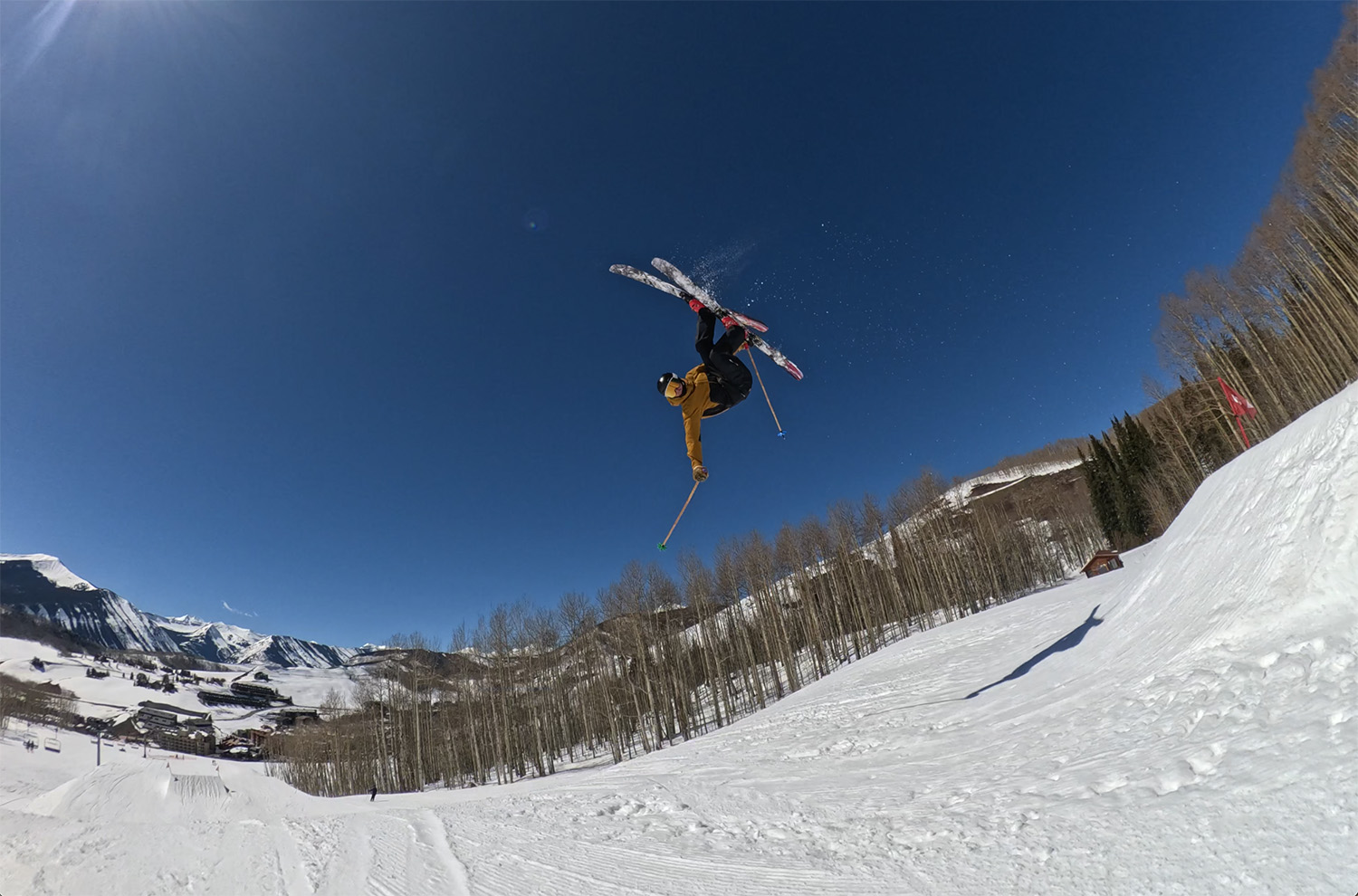
Deep Dive: Atomic Bent 100
We compare the Atomic Bent 100 to the previous Bent 100, Atomic Bent 110, Black Crows Camox, Fischer Nightstick 97, J Skis Allplay, Head Oblivion 102, Dynastar M-Free 99, Dynastar M-Free 100, K2 Reckoner 102, Line Chronic 101, K2 Omen Team, Nordica Unleashed 98, 4FRNT Switch, Faction Studio 2, Salomon Depart, Salomon QST 100, RMU Apostle 96 Ti, Line Optic 96, Line Pandora 99, Blizzard Rustler 9, ZAG Slap 98, Icelantic Nomad 100, and Rossignol Sender Soul 102.
Blister’s Flash Reviews and Deep Dives are accessible to those who purchase one of our paid subscriptions
To get our comprehensive Deep Dives and our initial, unfiltered reports on new gear, become a member and receive many other services, deals, and discounts.
If you’re already an active member, please log in.
(If you’re already logged in and a member in good standing and seeing this message in error, please refresh this page in your browser.)

2024-2025 Blister Digital Winter Buyer’s Guide
350+ skis, 65 boots, and 280+ pages of honest, accurate product reviews and comparisons. Order our 24/25 Winter Buyer’s Guide or become a BLISTER+ member to read the Digital Guide NOW.
If you’re already a Blister Member or have purchased the 24/25 Winter Buyer’s Guide and are seeing this message, please log in and then refresh this page.
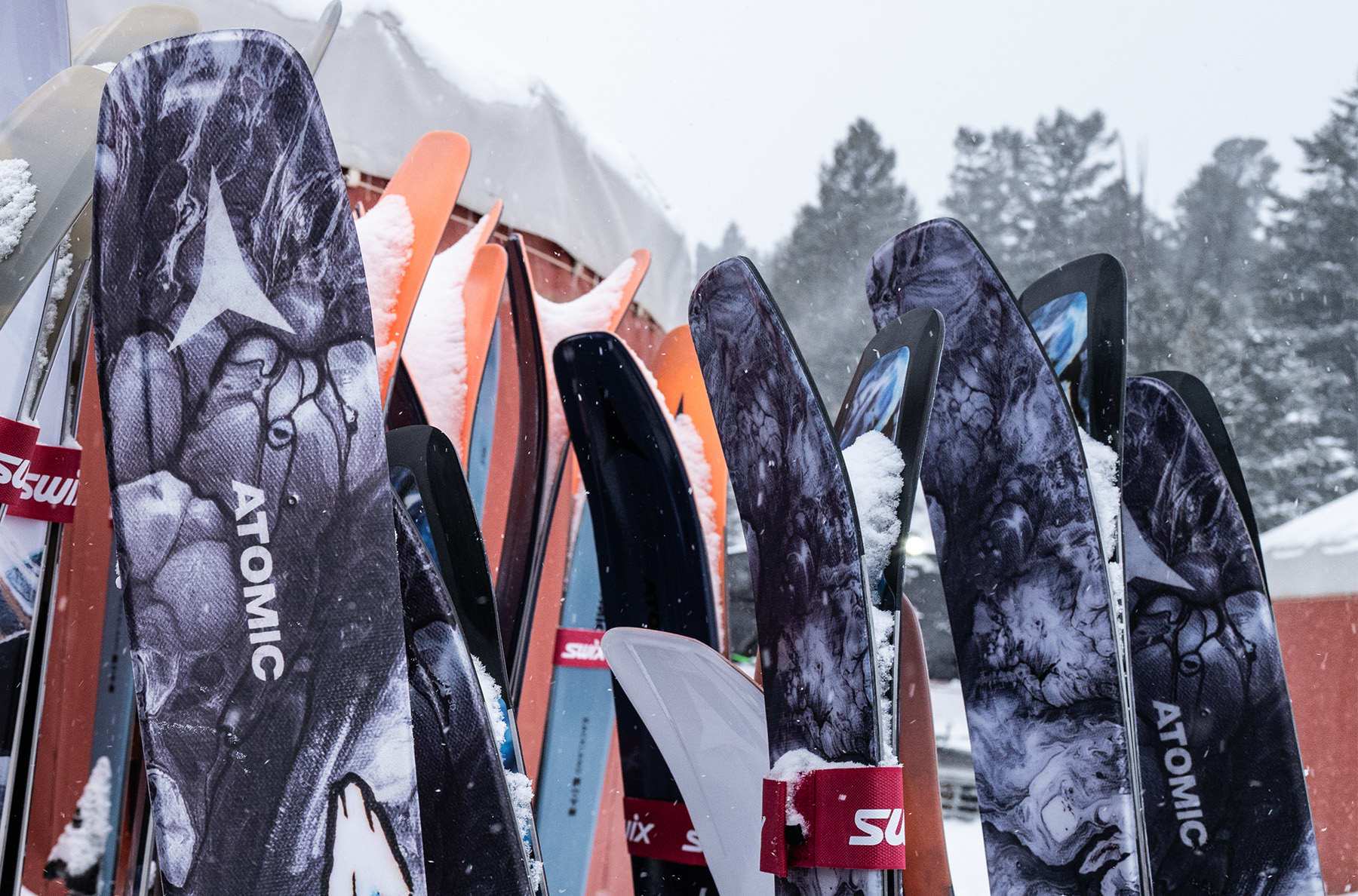
Flash Review: 24/25 Atomic Bent 100
Atomic has updated the popular Bent 100 for 24/25, and we just got our first few days on the new ski. Here are our initial thoughts on how it compares the previous version and the wider Bent models.
Blister’s Flash Reviews and Deep Dives are accessible to those who purchase one of our paid subscriptions
To get our comprehensive Deep Dives and our initial, unfiltered reports on new gear, become a member and receive many other services, deals, and discounts.
If you’re already an active member, please log in.
(If you’re already logged in and a member in good standing and seeing this message in error, please refresh this page in your browser.)
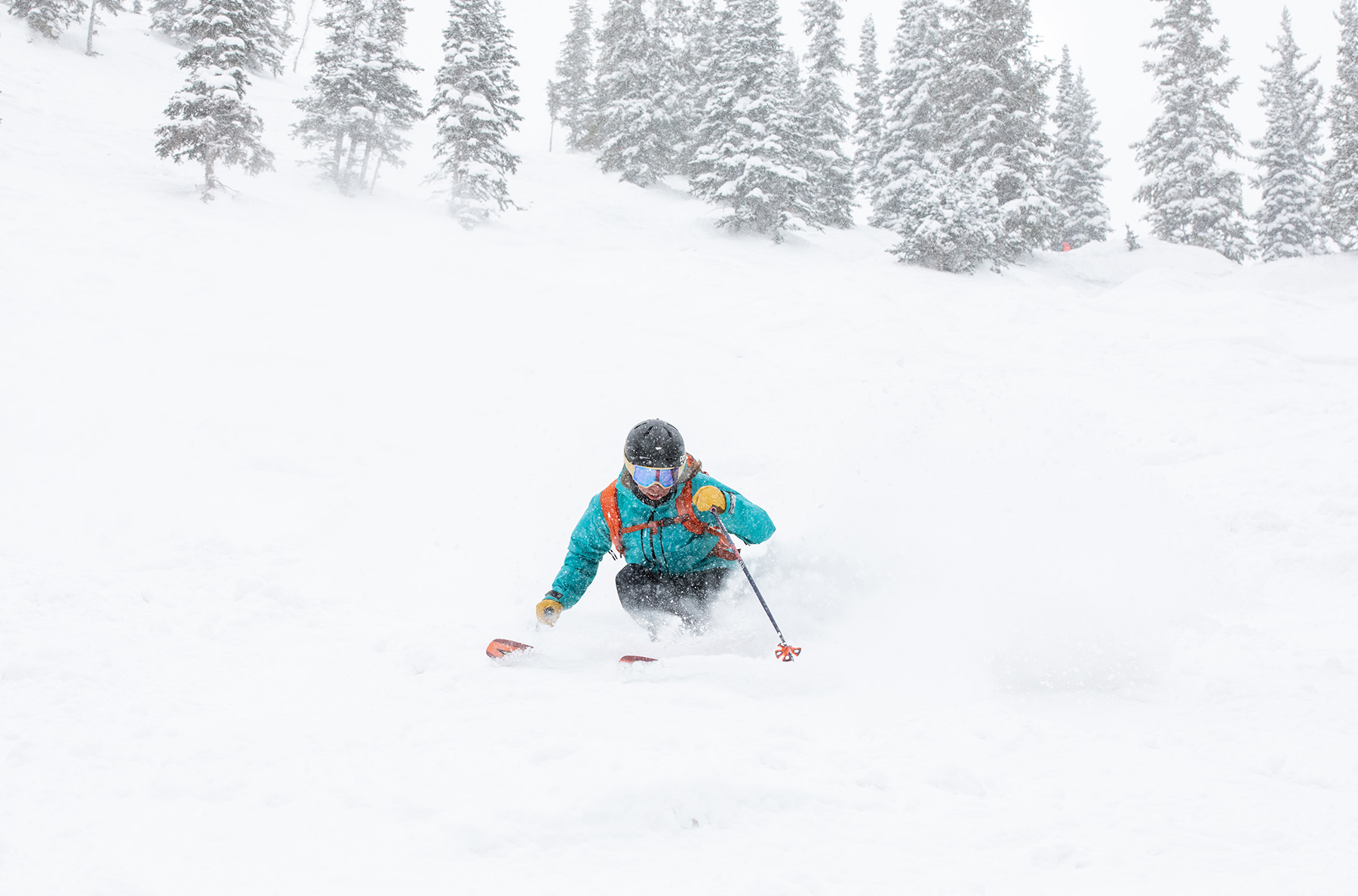
2022-2023 Atomic Bent 110
The Atomic Bent 110 brings much of the popular Bent Chetler 120’s playfulness, low weight, and maneuverability to a slightly more practical, narrower platform. Check out our Full Review & Deep Dive comparisons for the whole story.
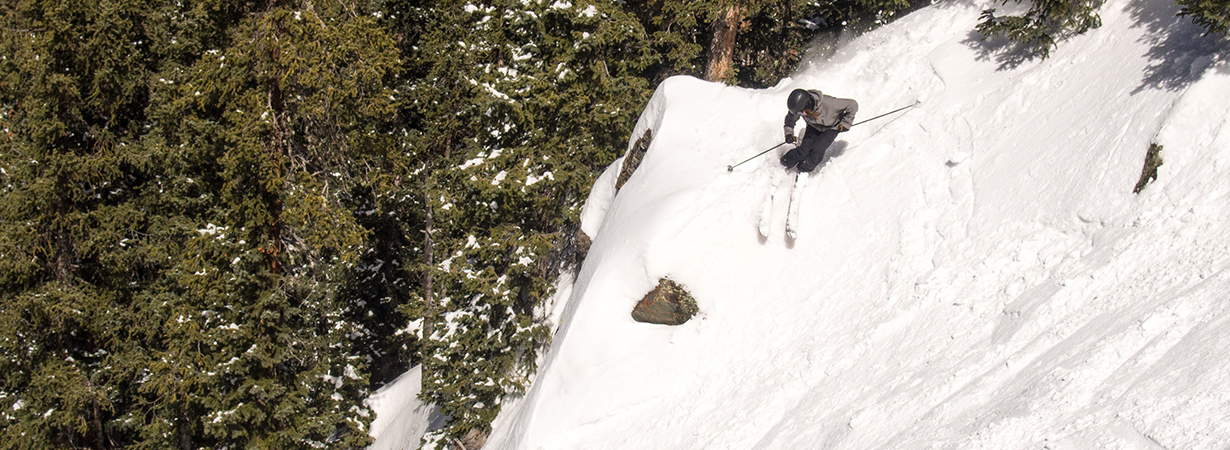
2021-2022 Atomic Bent Chetler 100
Since it’s named after Chris Benchetler — one of the most creative and playful skiers in the world — you might think you know exactly what sort of ski the new Bent Chetler 100 is. Think again. Check out our full review.




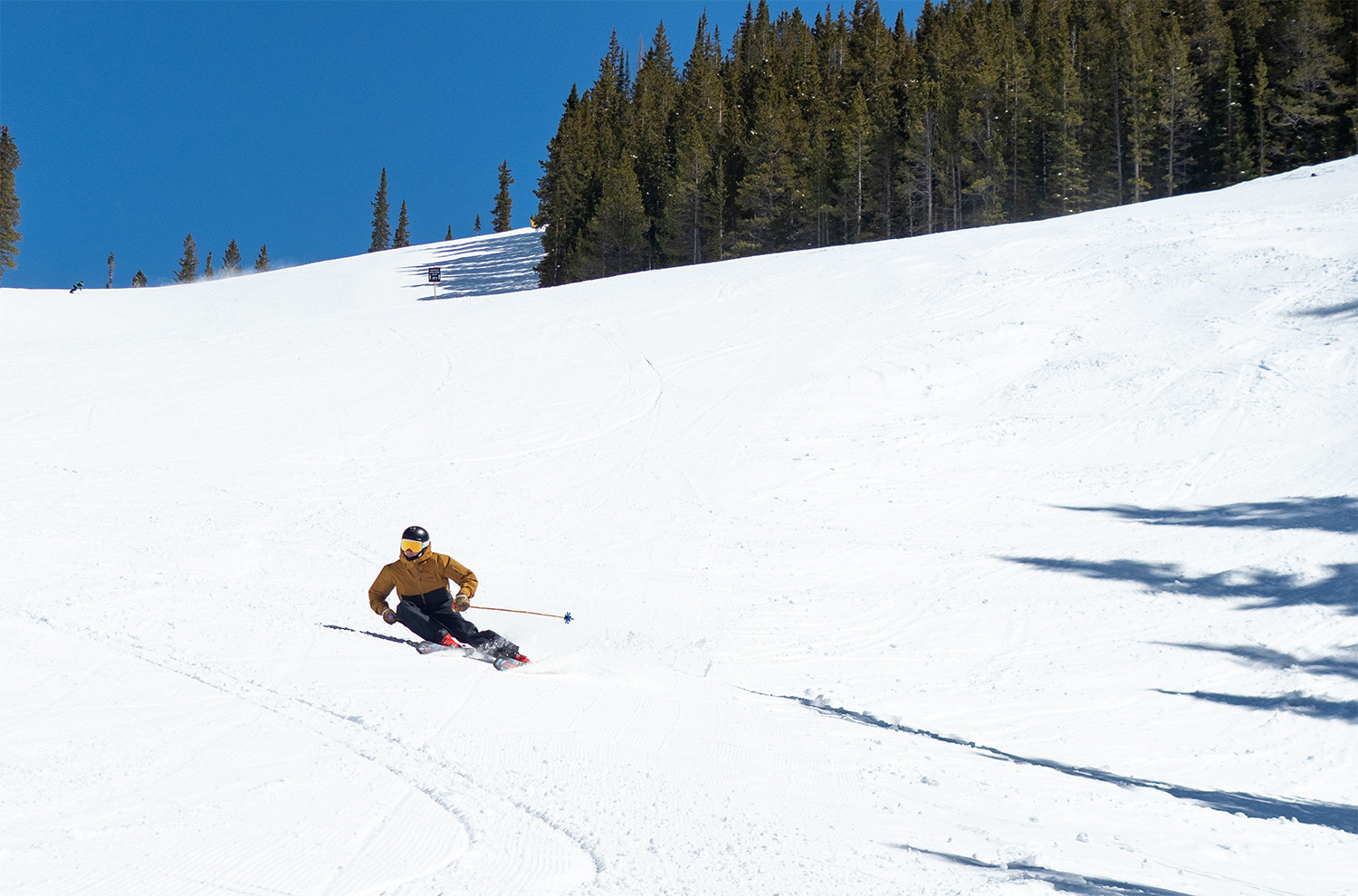
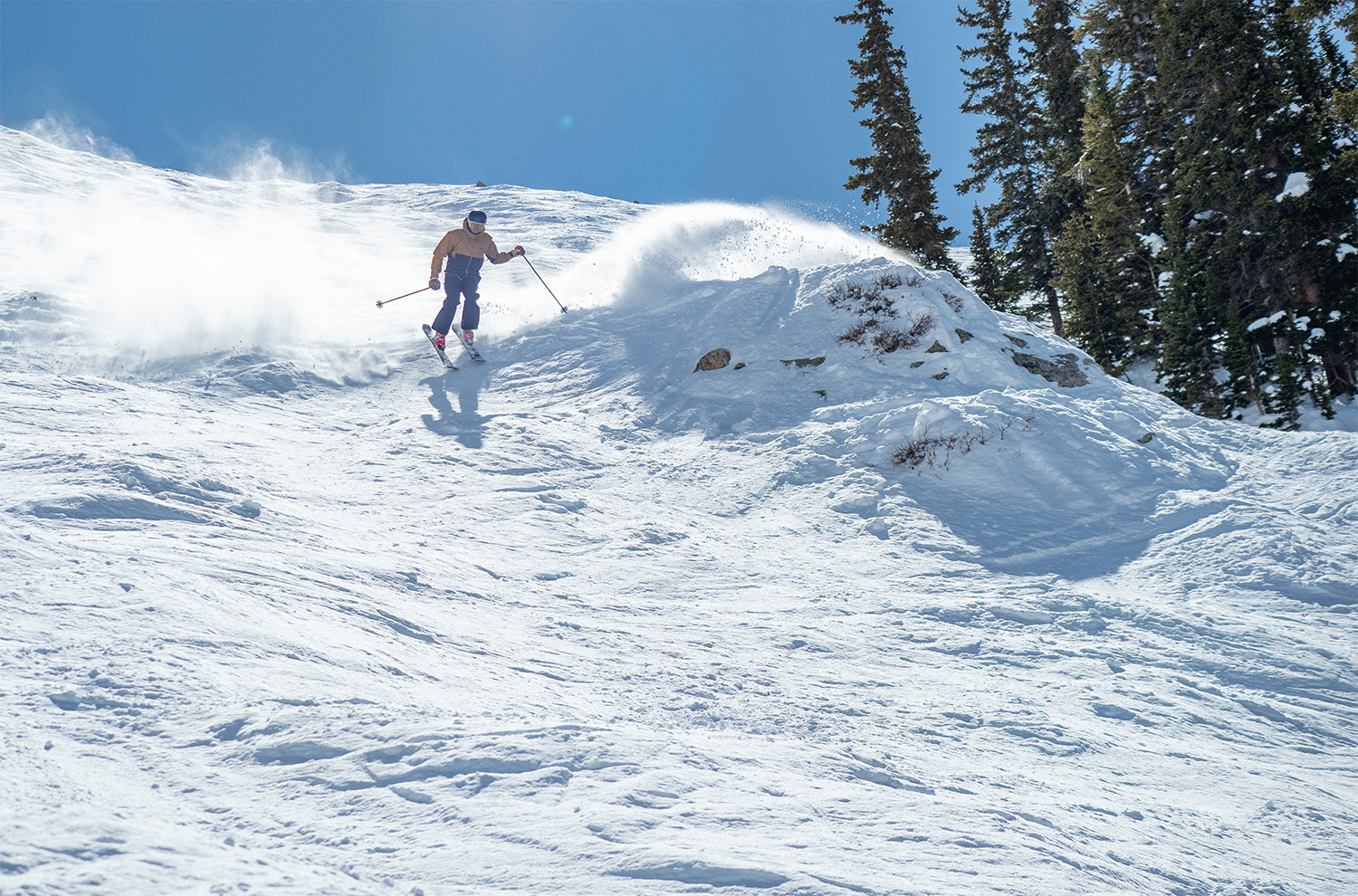
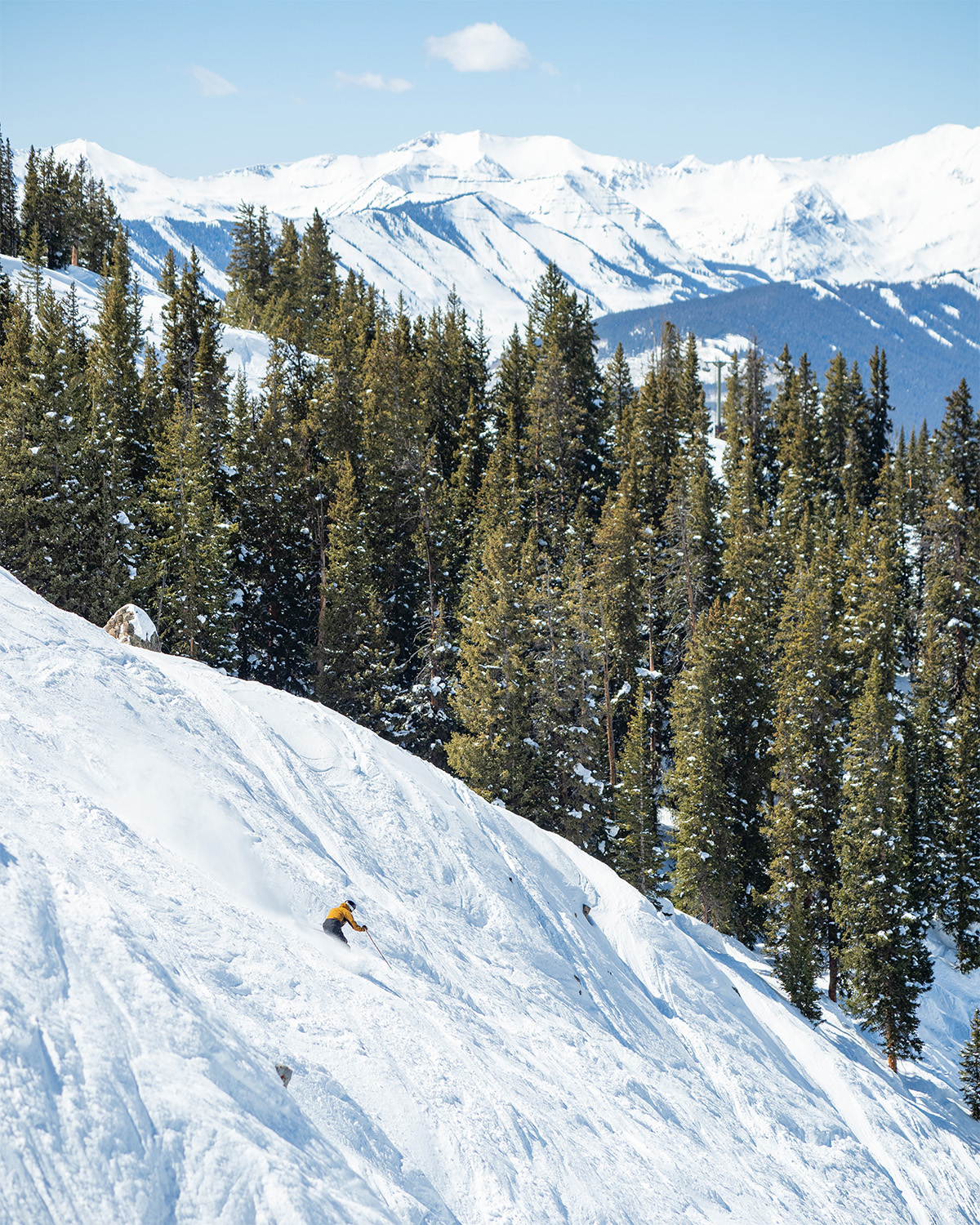
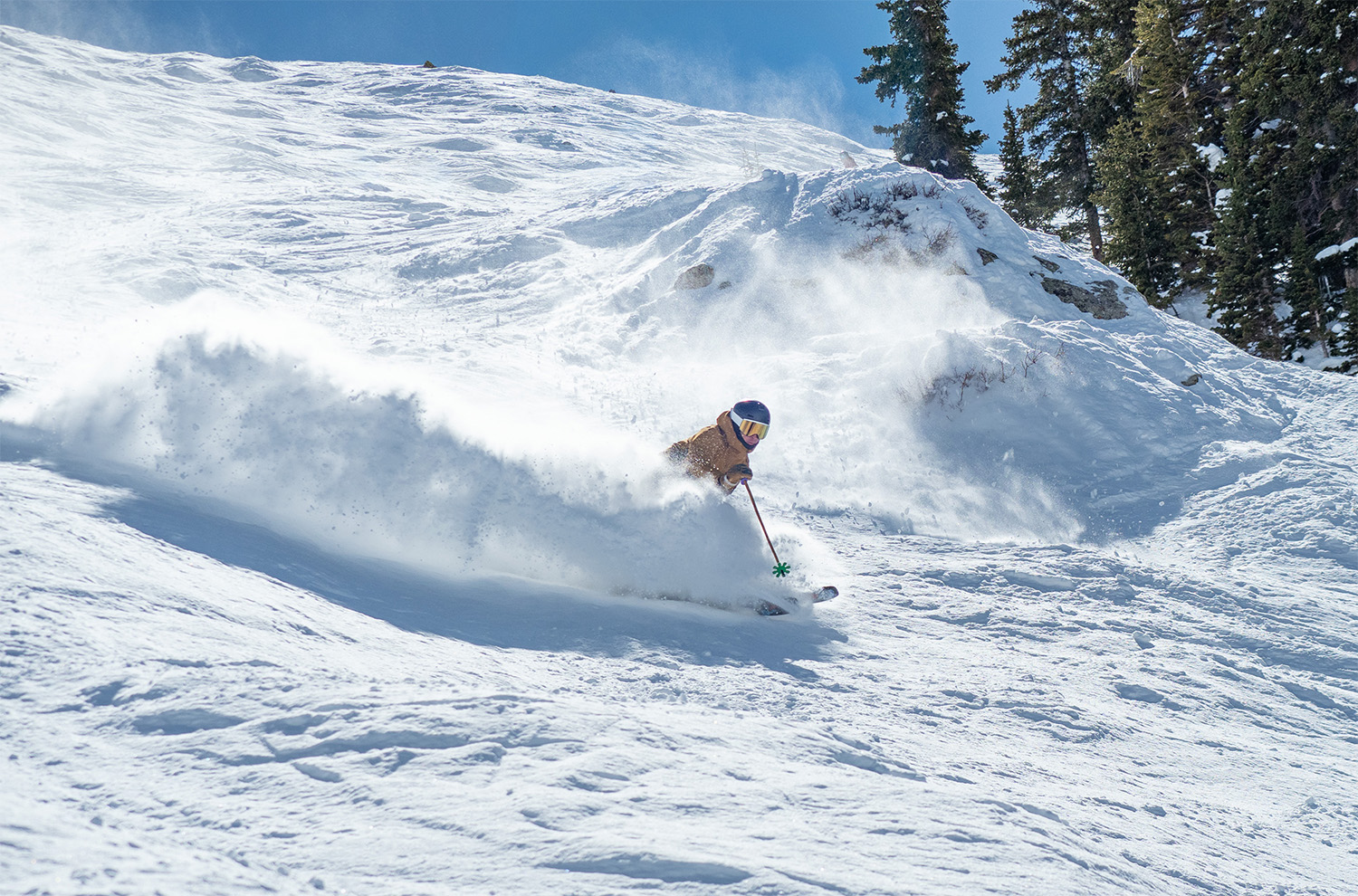
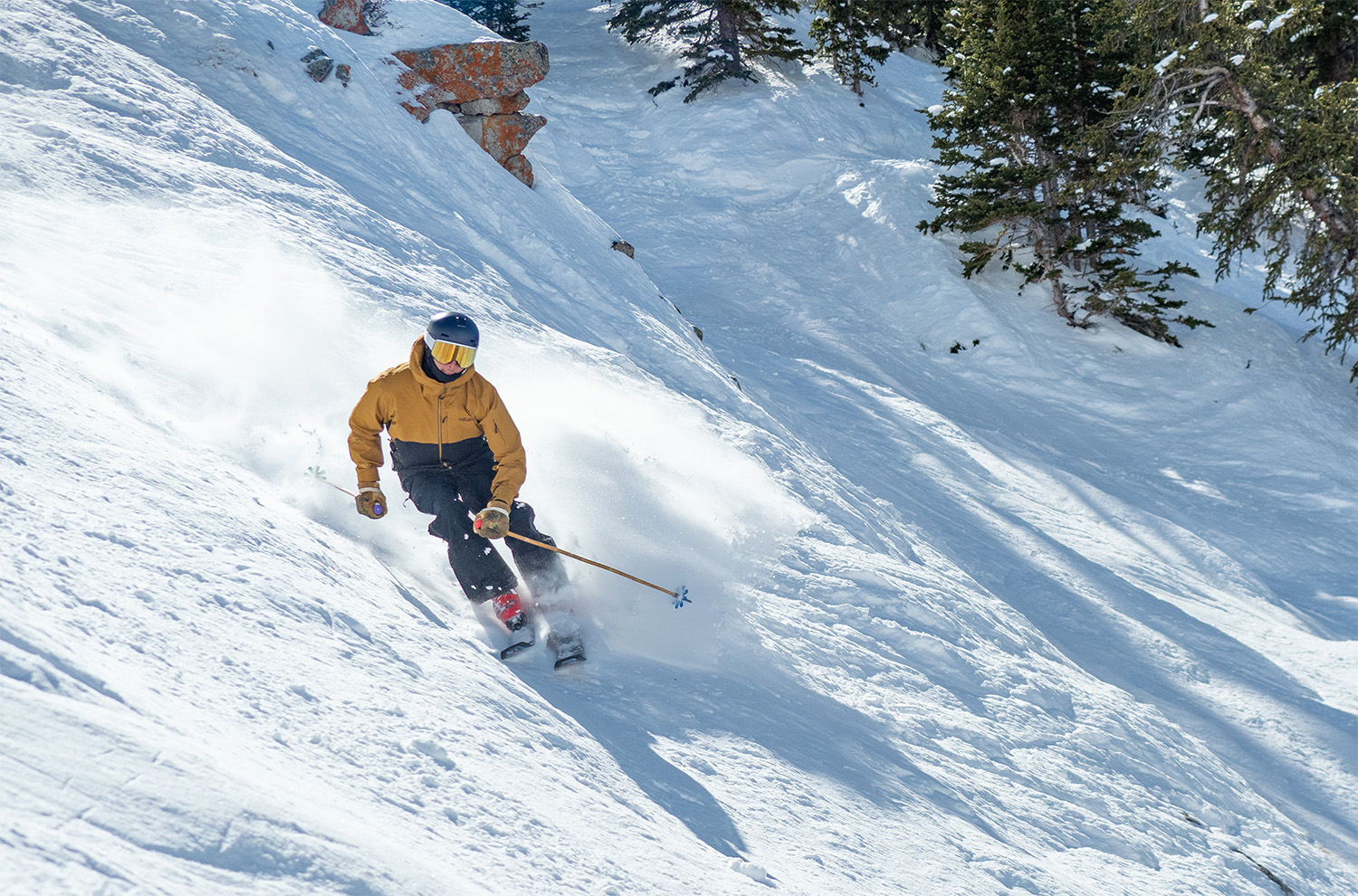
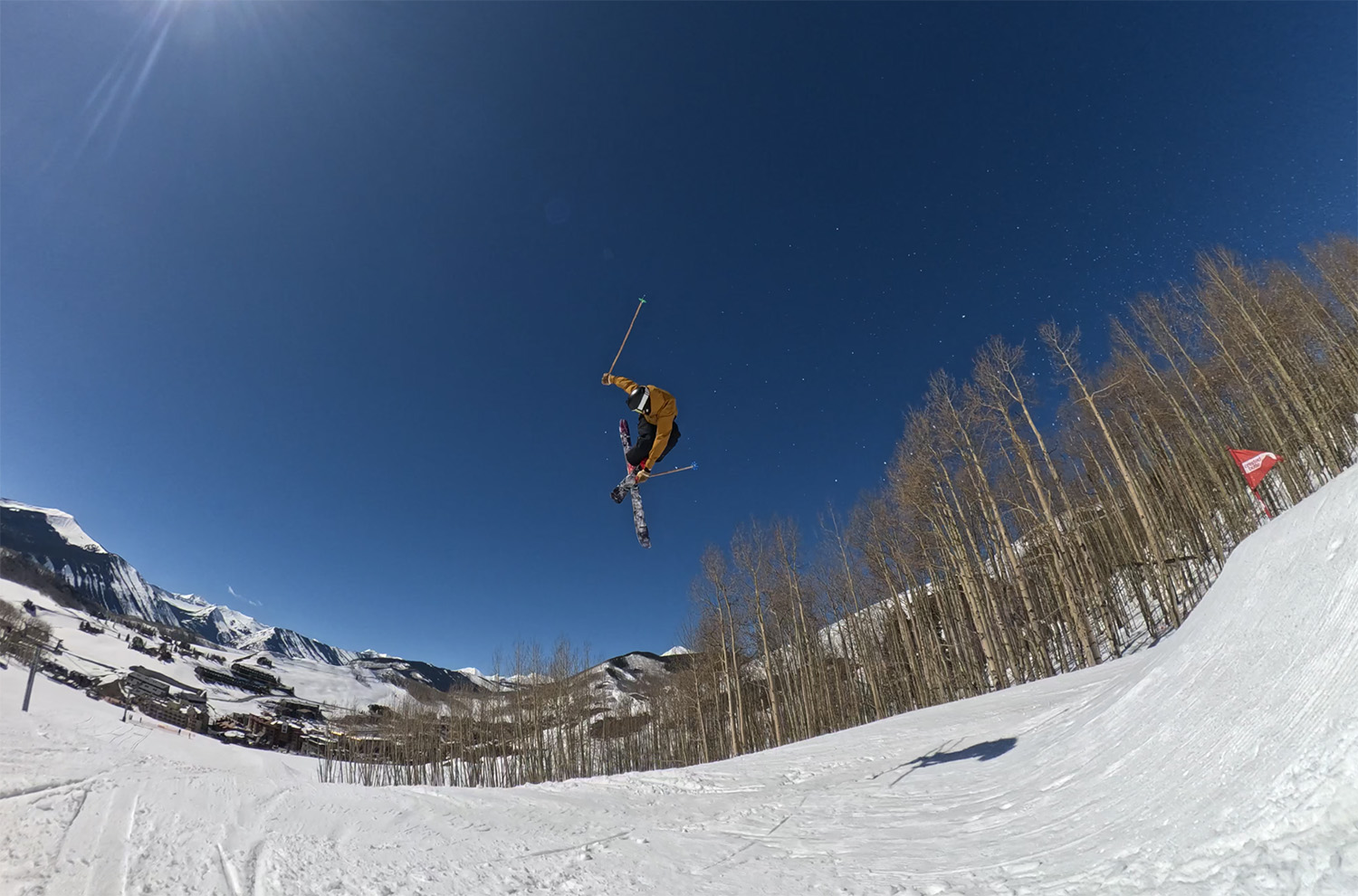

Love the new Picasso-esque top sheets. Definately my favorite graphic so far for the Bent 100.
TLDR: Save a few hundred bucks and buy a prior season Bent 100?